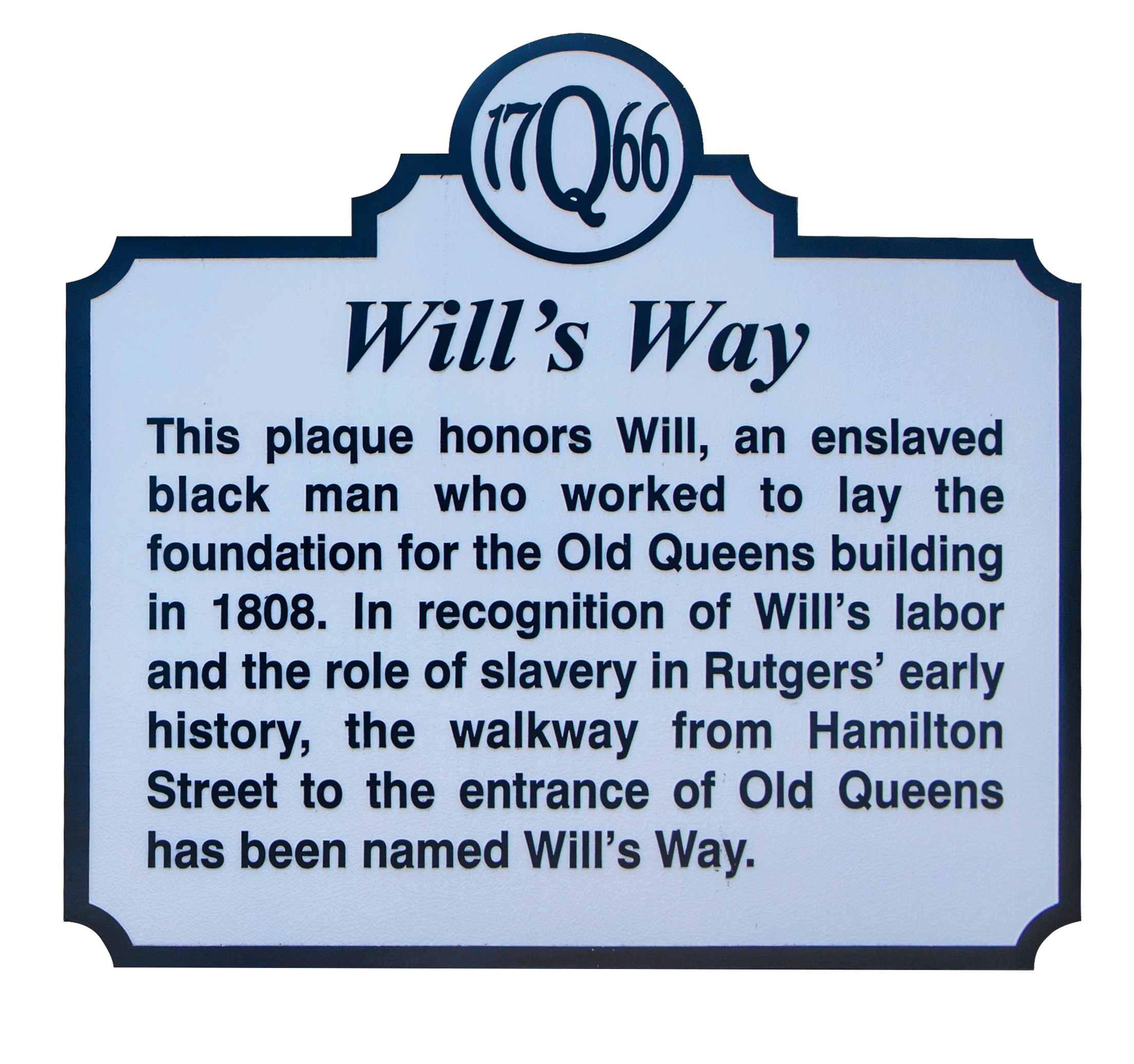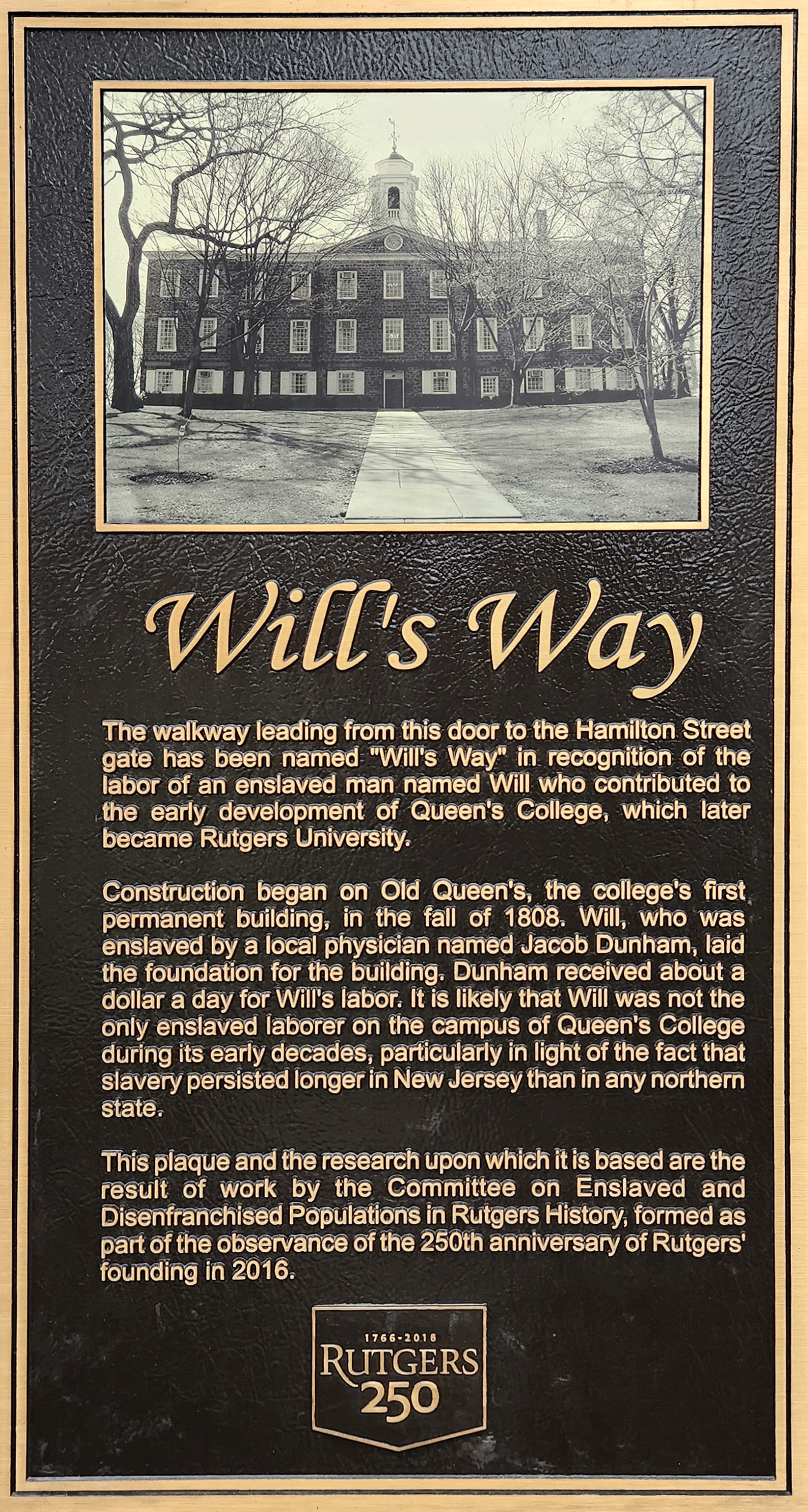 |
Scarlet and Black Marker
WILL’S WAY
This plaque honors Will, an enslaved black man who worked to lay the foundation for the Old Queens building in 1808. In recognition of Will’s labor and the role of Slavery in Rutgers’ early history, the walkway from Hamilton Street to the entrance of Old Queens has been named Will’s Way.
|
 |
Bronze Plaque
WILL’S WAY
The Walkway leading from this door to the Hamilton Street gate has been named “Will’s Way” in recognition of the labor of an enslaved man named Will who contributed to the early development of Queen’s College, which later became Rutgers University.
Construction began on Old Queen’s, the college’s first permanent building, in the fall of 1808. Will, who was enslaved by a local physician named Jacob Dunham, laid the foundation for the building. Dunham received about a dollar a day for Will’s labor. It is likely that Will was not the only enslaved laborer on the campus of Queen’s College during its early decades, particularly in light of the fact that slavery persisted longer in New Jersey than in any northern state.
This plaque and the research upon which it is based are the result of work by the Committee on Enslaved and Disenfranchised Populations in Rutgers History, formed as part of the observance of the 250th anniversary of Rutgers’ founding in 2016.
|



